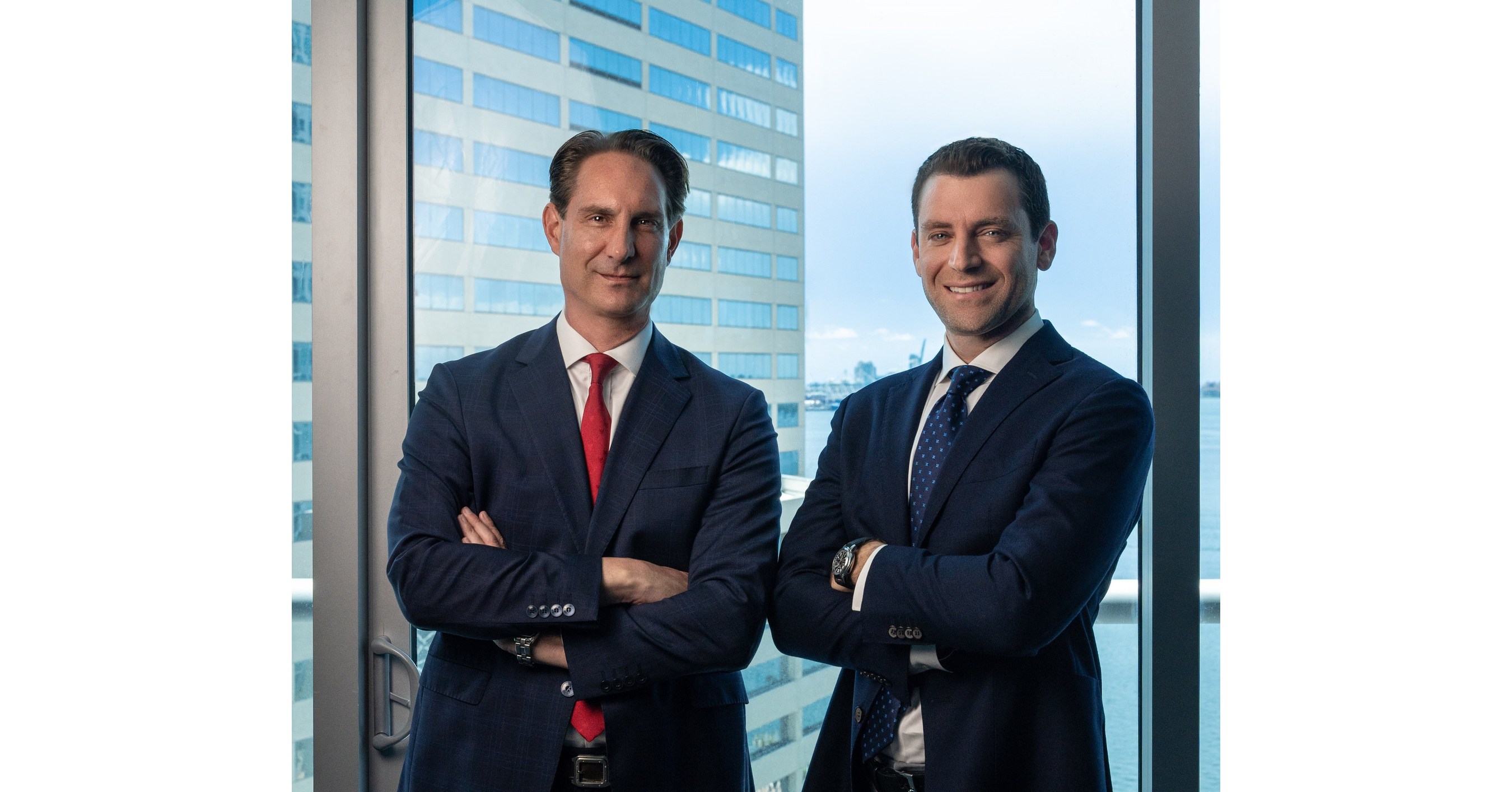Meanwhile, the commissioner of a prominent collegiate athletic conference tells us why D.C. attracted the organization’s headquarters.

e won’t know who won the 2026 World Cup until all the matches are played three years from now in Canada, Mexico and the United States. But we already know which cities won the headquarters sweepstakes driven by the games: Atlanta and Miami.
The first off-the-field “golazo” came on Sept. 15, when the U.S. Soccer Federation announced it would locate its headquarters and first-ever National Training Center in Atlanta. Bolstered by a $50 million donation from Atlanta United and Atlanta Falcons owner Arthur Blank, the new base of American soccer will house the operations of USSF and all its national teams.
The second scoring strike, more like a “panenka,” happened on Sept. 26 when FIFA, the global governing body for professional soccer, announced it would relocate more than 100 staff personnel from Zurich, Switzerland, to Miami.
The buildup to the world’s grandest sporting event is the tailwind pushing these moves, and the big winners are two Southern cities that have made quite a name for themselves on the pitch. Miami garnered global headlines this summer when it persuaded the biggest sports personality on the planet — Lionel Messi — to leave Europe for Inter Miami of Major League Soccer.
How massive was that move? When Inter Miami played a match versus Los Angeles FC at BMO Stadium in Southern California, A-list celebrities turned out in droves. As soon as he signed with David Beckham’s South Florida club, Messi became the most-watched star on Apple TV, as subscriptions to the MLS Season Pass on Apple TV skyrocketed.
Atlanta United has been just as successful, setting attendance records in MLS while dominating its opponents at Mercedes-Benz Stadium. Each team is led by a charismatic Argentine star: Messi in Miami and Thiago Almada in Atlanta. Both are passing and goal-scoring wizards. In his brief stint with Miami, Messi has already led the club to a Leagues Cup championship and an appearance in the U.S. Open Cup title game. Since 2018, Atlanta has won the MLS Cup, U.S. Open Cup and Campeones Cup.
In Atlanta’s case, the importance of landing the USSF headquarters cannot be overstated. This is not just a move made for the 2026 World Cup; it’s an opportunity to position both Atlanta and the U.S. national teams for global ascendance.
‘For Sale’ Sign Signaled Change
USSF leaders conducted a nationwide search, led by Deloitte consultants, before picking the capital city of Georgia. “This win for the state was a team effort in the making,” says Kristi Brigman, deputy commissioner of global commerce for the Georgia Department of Economic Development (GDEcD). “When the U.S. Soccer Federation’s site selection consultants brought GDEcD onboard last year, we went to work with our partners at Metro Atlanta Chamber [MAC] and Georgia Power to help build a strong business argument for ‘Why Georgia?’ ”
Brigman adds that “at the same time, other organizations around metro Atlanta, including MAC’s Atlanta Sports Council, were already building additional connections ahead of the FIFA World Cup 2026. The energy, excitement and economic vitality our corporate, public and philanthropic communities created helped push Georgia to the top — and to victory.”
Domestic and international flight connections at the world’s busiest airport, Hartsfield-Jackson International, were pivotal factors in Atlanta’s favor, as was the considerable corporate support for soccer from Arthur Blank, Coca-Cola, The Home Depot and Delta Airlines.
“This win for the state was a team effort in the making. When the U.S. Soccer Federation’s site selection consultants brough GDEcD onboard last year, we went to work with our partners at Metro Atlanta Chamber and Georgia Power to help build a strong business argument for ‘Why Georgia?’”
— Kristi Brigman, Deputy Commissioner of Global Commerce, Georgia Department of Economic Development
Photo courtesy of GDEcD
All U.S. Soccer had to do was say goodbye to Chicago, which in essence it had already done when it put a “For Sale” sign up on the old mansions that had housed its offices since 1991. Located in Chicago’s Prairie Avenue Historical District, the two 19th-century homes can be bought for $4.2 million.
USSF’s new digs will cost considerably more once Deloitte and USSF CEO and Secretary General J.T. Batson pick a final site in metro Atlanta. They say that will happen by January 2024.
The new site will need to be large enough to accommodate training grounds for all 27 national teams. MLS Commissioner Don Garber has called the National Training Center “one of the most important projects in the history of soccer in America.”
U.S. Soccer currently maintains a nine-training-field complex that it leases from the Los Angeles Galaxy of MLS in Carson, California. That site covers 125 acres. The one in Atlanta will need to be larger. Observers speculate that an undeveloped site in southwest Atlanta, near the airport, could be an ideal landing spot.
Florida Seed Money Paid Off
The FIFA-to-Miami news came with much less fanfare, but it was welcomed warmly in the land of Messi, Beckham, Jimmy Butler and Tua Tagovailoa. Funding of $10 million from various Florida agencies didn’t hurt the cause either.
The news came about a month after FIFA opened a 60,000-sq.-ft. office in Coral Gables. “Being physically closer to our colleagues at FIFA in Miami and the U.S. will increase our collaboration,” a FIFA leader said in an email, per the Associated Press.
Miami and 10 other U.S. cities, including Atlanta, were chosen last year to host matches during the 2026 FIFA World Cup. The now-defunct Enterprise Florida board voted in 2021 to allocate $10 million to help Miami become a host site.
Florida Gov. Ron DeSantis said two years ago that “bringing the FIFA World Cup back to Florida would be an ideal complement to the attractions, amenities and events already staged in the Sunshine State.”
That was before Miami landed its biggest attraction of all: Messi.
Atlantic 10 Conference Finds its ‘Pivot Point’ in the Nation’s Capital
Site selection for a collegiate sports conference, it turns out, is a lot like site selection for a corporate headquarters. Find the mid-point of your customer base, identify an international airport with great connections, locate an office environment that’s attractive for your employees, and negotiate a deal that positions your organization for long-term success.
The Atlantic 10 Conference just did all of that in selecting a new headquarters site near Dupont Circle in Washington, D.C.
Why did the 15-member league decide to leave Newport News, Virginia, its home of 14 years, for new digs in the nation’s capital?
When I asked A-10 Commissioner Bernadette McGlade that question, she said, “It is right in the heart of the A-10 footprint, which stretches from Davidson in North Carolina north to St. Bonaventure in New York and west to Loyola Chicago. We are a fly conference and a basketball-centric league. D.C. is a pivoting point.”
McGlade, a former basketball star at the University of North Carolina and head coaching legend at Georgia Tech, adds, “We wanted to stay within our footprint. We have a fabulous location here in Newport News, but there have been significant changes to our local airport. We have been traveling to Richmond and D.C. a lot to do our meetings.”
The headquarters search focused primarily on the Mid-Atlantic, she tells Site Selection. “We have been studying this for more than a year and a half. With this move, we will be right in the heart of the district in the neighborhood of Dupont Circle.”
The A-10 is no stranger to DC. It’s played its championship at Capitol One Arena twice and is slated to be there again in 2025. Its roster reads like a Who’s Who of mid-major basketball powerhouses. From Sweet Sixteens to Final Fours, these schools have forged a reputation as giant-killers who comfortably wear Cinderella’s slippers to the Big Dance.
Member institutions include Davidson College, University of Dayton, Duquesne University, Fordham University, George Mason University, George Washington University, Loyola University Chicago, La Salle University, University of Massachusetts, University of Rhode Island, University of Richmond, St. Bonaventure University, Saint Joseph’s University, Saint Louis University and Virginia Commonwealth University. Together, these schools provide athletic teams that give more than 5,000 students the opportunity to play intercollegiate sports.
Media Studio Was a Big Draw
Map the locations of these schools, and McGlade says the move makes even more sense.
“The efficiency of transportation will go a long way” in helping both the institutions and the league, she says. “Currently, in Newport News, we cannot get a direct flight to all our conference institutions. Our new office in D.C. will have everything we need. It will have an advanced media studio. We have not had that before. We will be able to produce our own A-10 Conference content and distribute that content to our media partners. The landscape of the media covering our sports teams has changed drastically. We are in nine states and in 31% of the media markets in the country. The new studio will be a huge asset.”
Chad Shuskey, interim president and CEO of the Washington DC Economic Partnership, says the local effort to recruit the A-10 was a collaborative effort of WDCEP, the Office of the Deputy Mayor for Planning & Economic Development, and Destination DC, the travel and tourism agency for the district. “They [Destination DC] were on a panel with Commissioner McGlade, and she mentioned that they were interested in relocating,” says Shuskey. “We started engaging with them and had lots of conversations and meetings.”
 “The landscape of the media covering our sports teams has changed drastically. We are in nine states and in 31% of the media markets in the country. The new studio will be a huge asset.”
“The landscape of the media covering our sports teams has changed drastically. We are in nine states and in 31% of the media markets in the country. The new studio will be a huge asset.”
— Bernadette McGlade, Commissioner, Atlantic 10 Conference
Photo courtesy of Atlantic 10 Conference
Shuskey says the league representatives liked what they saw in D.C. “Geographically, it is a strategic location for them,” he notes. “D.C. is in the heart of their membership. Having three airports here [Reagan National, Dulles and Baltimore-Washington International] makes for easy transportation. Also, knowing that D.C. has the talent they are going to need, they knew they could recruit the people they wanted.”
From Philly to Newport News to DC
McGlade adds that after moving the league from Philadelphia to Newport News in 2009, this is likely to be the last home office move for a while. “The district is a vibrant, major location with significant advantages in travel, economics and nationally recognized media,” she said when the move was announced on September 7. “Washington provides access to a highly educated, diverse community that embraces Fortune 500 companies and innovative technology and is the political center of the world — all factors in the current college athletics landscape. With its robust sports history and dedicated fan bases throughout the national capital region, we are proud and excited to move to Washington, D.C.”
D.C. Mayor Muriel Bowser said that “having the A-10 in DC is a win-win for our city and for sports. We look forward to working with Commissioner McGlade and her team on the new partnerships and opportunities ahead and welcoming their 15 member schools to the best city in the world.”
The A-10 is set to take residency in its new offices in November 2023, with completion of the move slated by June of 2024. The new space is about 5,000 sq. ft. and is located in the National Center for Higher Education building, which also houses The American Council for Education (ACE) and an NCAA satellite bureau.
“This has been a great landing place for us,” McGlade says. “The D.C. location gives us different opportunities for the future.”


